
HMS Kingfisher was a Doterel-class screw sloop of the Royal Navy. She was built at Sheerness Dockyard and launched on 16 December 1879. She conducted anti-slavery work in the East Indies in the late 1880s before being re-roled as a training cruiser, being renamed HMS Lark on 10 November 1892, and then HMS Cruizer on 18 May 1893. She was sold in 1919.
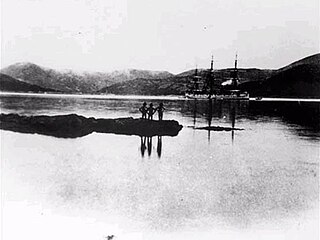
HMS Pegasus was a Doterel-class screw composite 6-gun sloop launched on 13 June 1878. She was sold for scrap in 1892.

The Osprey class was a Royal Navy class of screw-driven sloops built between 1874 and 1877. Nine additional ships were built to a revised design, the Doterel-class sloop. They were the first class of ship in the Royal Navy to use glass scuttles.

HMSGannet is a Royal Navy Doterel-class screw sloop-of-war launched on 31 August 1878. It became a training ship in the Thames in 1903, and was then loaned as a training ship for boys in the Hamble from 1913. It was restored in 1987 and is now part of the UK's National Historic Fleet.
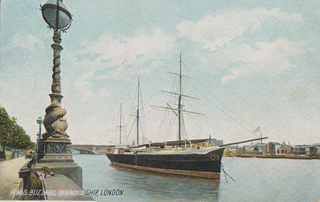
HMS Buzzard was a Nymphe-class composite screw sloop and the fourth ship of the Royal Navy to bear the name.
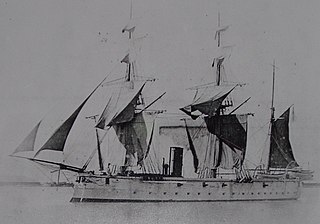
The Amazon class was a class of six screw sloops of wooden construction built for the Royal Navy between 1865 and 1866.

The Fantome class was a six-ship class of 4-gun screw composite sloops built for the Royal Navy during 1873 and 1874.

The Beagle class was a two-ship class of 8-gun screw steel sloops built for the Royal Navy in 1889.

The Phoenix class was a two-ship class of 6-gun screw steel sloops built for the Royal Navy in 1895. Both ships participated in the suppression of the Boxer Rebellion, but Phoenix was destroyed in a typhoon while alongside in Hong Kong in 1906. Algerine became a depot ship at Esquimalt, was sold in 1919, and was finally wrecked in 1923.

The Mariner class was a class of six 8-gun gunvessels built for the Royal Navy between 1883 and 1888. Four were built in the Naval Dockard at Devonport, and two elsewhere; the Acorn was built by contract at Jacobs Pill on the Pembroke River, while the Melita was built in the Malta Dockyard, the only substantial ship of the Royal Navy ever to be built in the island.
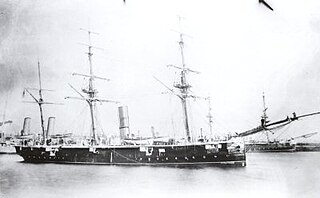
The Satellite class was a class of 12-gun composite sloops built for the Royal Navy between 1883 and 1888, and reclassified as corvettes in 1884.
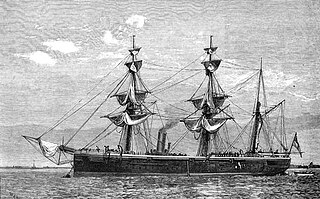
The Doterel class was a Royal Navy class of screw-driven sloops. They were of composite construction, with wooden hulls over an iron frame. They were a revised version of an 1874 design by the Royal Navy's Chief Constructor, William Henry White, the Osprey-class sloop. Two of the class were lost, one to an explosion off Chile and one wrecked off Canada. Gannet is preserved at Chatham Historic Dockyard.

HMS Espiegle was a Doterel-class sloop of the Royal Navy, built at the Devonport Dockyard and launched on 3 August 1880.

HMS Nymphe was an Amazon-class sloop, of the Royal Navy, built at the Deptford Dockyard and launched on 24 November 1866. She served in the East Indies and Australia, and was sold in 1884.

HMS Phoenix was a Royal Navy Phoenix-class steel screw sloop. She was launched at Devonport in 1895, saw action in China during the Boxer Rebellion, and later served on the Pacific Station. She had the misfortune to be alongside a coaling pier in Hong Kong on 18 September 1906 when a typhoon struck the colony. She foundered and became a total loss.

HMS Mutine was a Doterel-class sloop of the Royal Navy, built at the Devonport Dockyard and launched on 20 July 1880. She became a boom defence vessel at Southampton in 1899 and was renamed Azov in 1904. She was sold after World War I.

HMS Dragon was a Doterel-class sloop of the Royal Navy, built at Devonport Dockyard and launched on 30 May 1878. She served in the East Indies, including the Anglo-Egyptian War of 1882, and the suppression of slavery. She was sold for breaking in 1892.
HMS Daphne was a Nymphe-class composite screw sloop and the fifth ship of the Royal Navy to bear the name. Developed and constructed for the Royal Navy on a design by William Henry White, Director of Naval Construction, she was launched at Sheerness Dockyard on 29 May 1888. It was the first command of Admiral Sir William Christopher Pakenham, KCB, KCMG, KCVO.
HMS Nymphe was a Nymphe-class composite screw sloop and the fifth ship of the Royal Navy to bear the name. She was renamed HMS Wildfire in 1906, HMS Gannet in 1916, and finally HMS Pembroke in 1917, before she was sold in 1920.
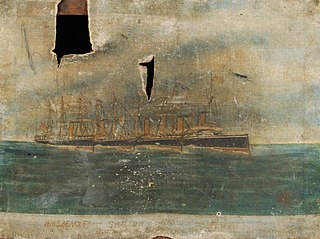
HMS Swallow was a Nymphe-class composite screw sloop and the twenty-seventh ship of the Royal Navy to bear the name. Developed and constructed for the Royal Navy on a design by William Henry White, Director of Naval Construction, she was launched at Sheerness Dockyard on 27 October 1885.


















